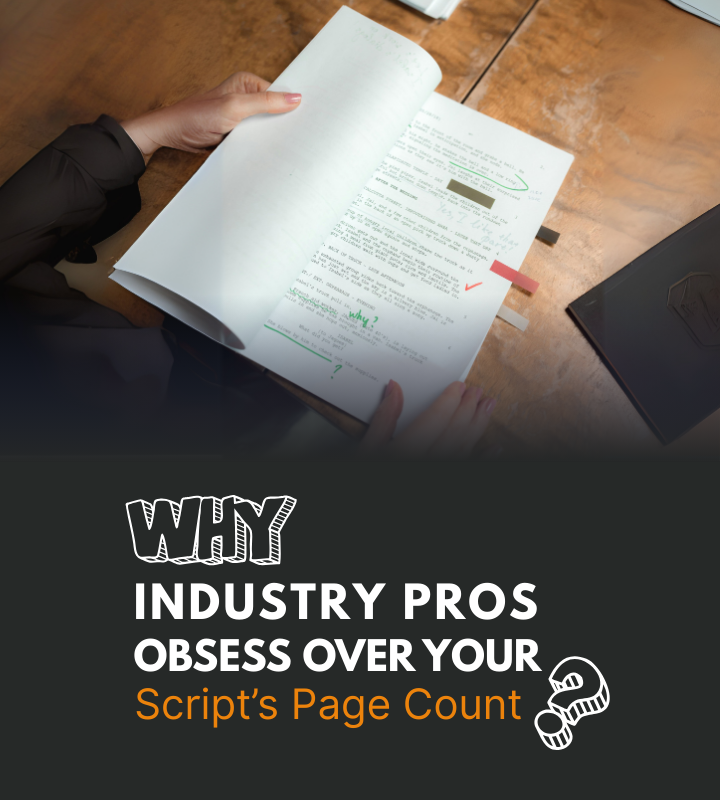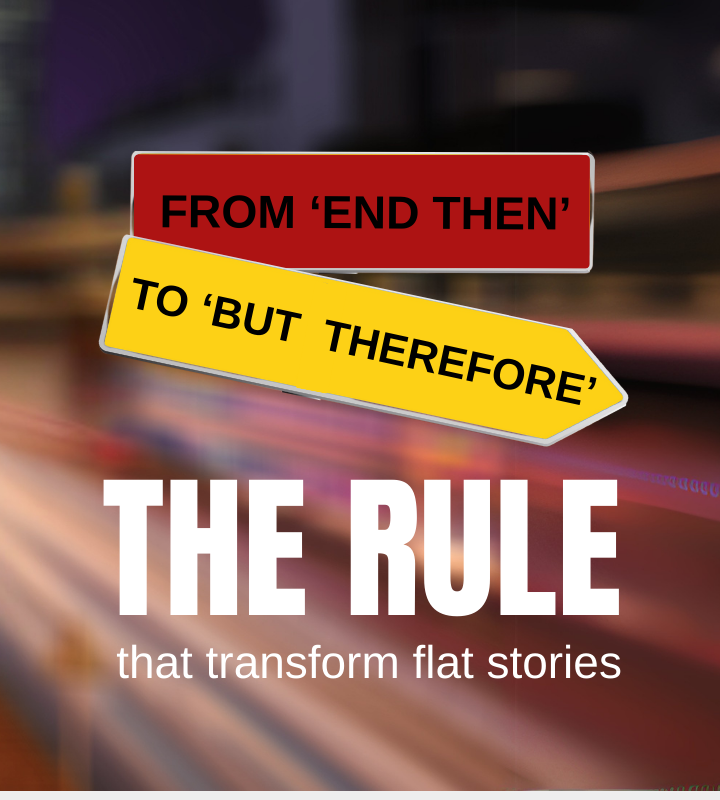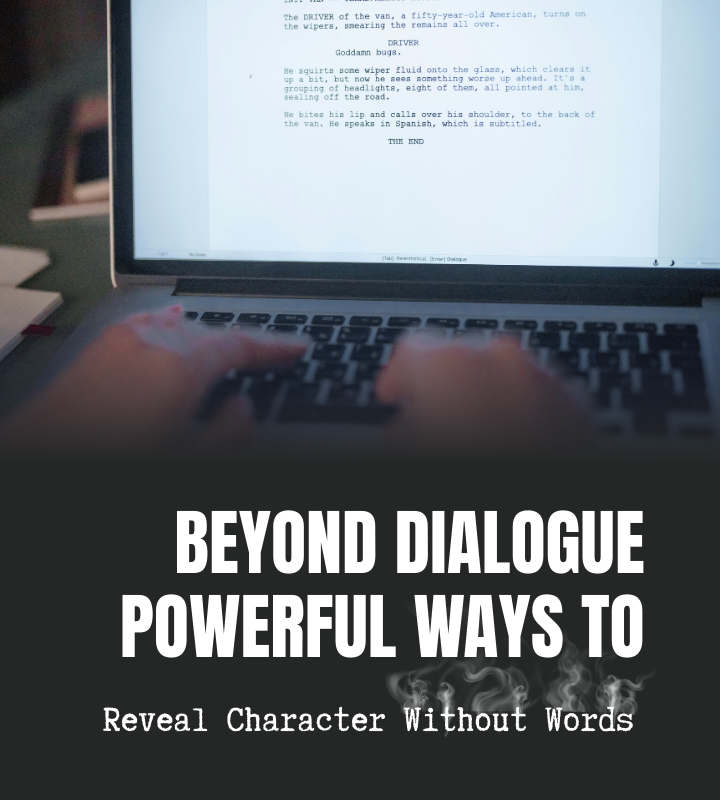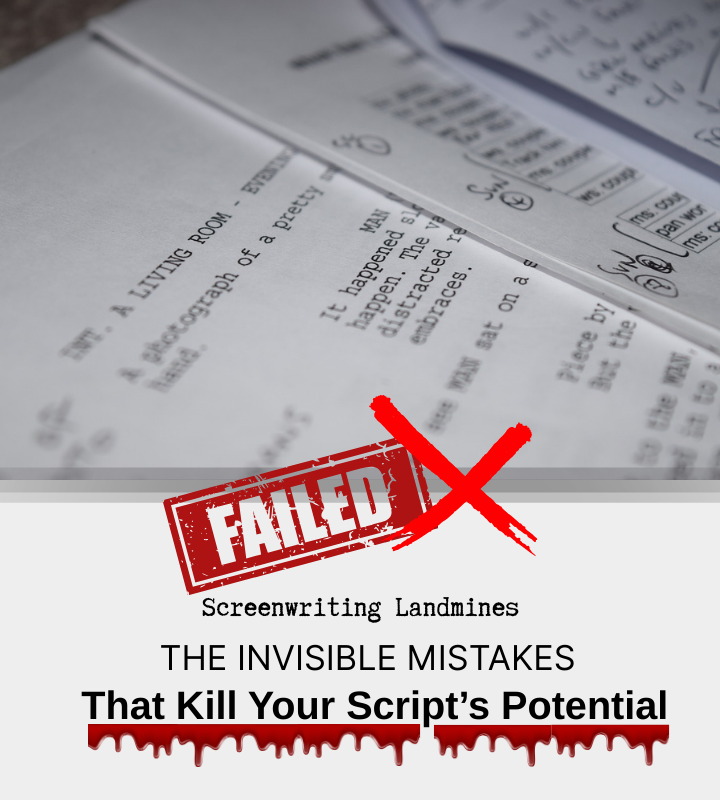HOLLYWOOD SCREENWRITING JARGON:
Essential Terms Every Screenwriter Should Know
*Based on Blake Snyder’s iconic work, Save The Cat.
1. THEMATIC PREMISE – The core philosophical question/message the film debates.
THEMATIC PREMISE EXAMPLES
The Dark Knight (2008)
"Order vs. Chaos"
Christopher Nolan's masterpiece explores this through the ideological battle between Batman (representing structured justice) and Joker (embracing pure anarchy). The film questions whether society needs rules to function or if chaos is the natural state of humanity.
Forrest Gump (1994)
"Destiny vs. Randomness"
The floating feather motif visually represents the central debate: Are our lives predetermined like Forrest believes ("Momma says life is like a box of chocolates"), or do we just "float" randomly through events as Lieutenant Dan suggests?
Parasite (2019)
"Is class mobility truly possible?"
Bong Joon-ho uses the architectural symbolism of stairs (the wealthy always ascending, the poor descending) to examine whether socioeconomic barriers can ever be fully overcome, culminating in the haunting basement revelation.
Each film's premise serves as:
✓ A philosophical framework for character decisions
✓ The source of central conflicts
✓ The lens through which viewers interpret the story
Why These Work:
- They're universal (appeal to global audiences)
- They're debate-worthy (no easy answers)
- They drive character arcs (Batman's rule-breaking, Forrest's journey, the Kim family's choices)
Tip: Great thematic premises often use dichotomies (two opposing ideas) to create tension.
2. GENRE — Categories of films with specific rules and audience expectations.
3. HIGH CONCEPT – A movie idea that can be summed up in one sentence with high marketing potential.
A film idea so clear and compelling it can be pitched in one sentence, blending universal appeal with immediate visual excitement.
Key Features:
✓ One-sentence pitchable ("Spider-Man: Bitten by a radioactive spider, a teen gains superpowers")
✓ Built-in marketing hooks (Jurassic Park: "Dinosaurs reborn in a theme park")
✓ Visual immediacy (Snakes on a Plane: Title = Plot)
Writer's Checklist:
✓ Passes the "What if...?" test (e.g., "What if toys came to life?")
✓ Appeals to primal emotions (fear, love, survival)
✓ Feels both fresh and familiar
High vs. Low Concept Examples:
✅ High Concept: Inception ("Dream thieves plant ideas in minds")
❌ Low Concept: Boyhood ("A boy grows up over 12 years")
Pro Tip:
High concept ≠ dumb. The Matrix and Get Out prove intellectual depth can coexist with marketable premises.
Cultural Note:
The term likely emerged in 1980s Hollywood when studios began prioritizing "pitch-driven" projects over auteur films.
4. HOOK – The unique idea that grabs attention and entices the audience?”
Memorable Hook Examples:
Jaws: "A killer shark terrorizes a beach town"
Inception: "Thieves steal ideas by entering dreams"
The Purge: "All crimes are legal for one night a year"
Hook Types:
Premise-Based: Snakes on a Plane (Title = Plot)
Character-Based: Forrest Gump ("A simple man lives an extraordinary life")
Theme-Based: The Matrix ("What if reality is a simulation?")
Why These Work:
✓ Instant intrigue ("I need to see this!")
✓ Clear conflict (Shark vs. town, reality vs. illusion)
✓ Emotional trigger (Fear, wonder, curiosity)
Pro Tip:
The best hooks often use:
- High stakes (The Purge)
- Irony (Deadpool: "A mercenary gets healing powers...and cancer")
- "What if?" scenarios (Jurassic Park)
5. PRIMAL – Universal human motivations that trigger instinctive audience reactions!
PRIMAL MOTIVATION EXAMPLES
Survival: The Revenant, 127 Hours
Family/Protection: Taken, John Wick
Revenge: Gladiator, Kill Bill
Sex/Attraction: Basic Instinct, Eyes Wide Shut
Hunger/Power: The Platform, The Menu
SCREENWRITING WITH PRIMAL DRIVES
✔ Character Motivation: "Why do they fight?" → "To save their child" (biological imperative)
✔ Conflict: "Who's the opponent?" → "The killer of their family" (primal rage)
✔ Reward: "What's at stake?" → "Safety/security" (hardwired need)
THE PRIMAL TEST
❓ "Would a caveman understand this story?"
❓ "If this were a silent film, would the emotions read?"
❓ "Is the character acting on instinct or forced logic?"
Key Insight:
Primal stories bypass intellect and speak directly to the lizard brain – John Wick works because "They killed his dog" triggers deeper outrage than complex political motives.
Bonus Tip:
Combine primal motives with high concept for maximum impact (Jaws = Survival + "Shark eats people").
6. LOGLINE OR ONE-LINE – A 1-2 sentence pitch capturing the core idea with irony and conflict.
THE 4 RULES OF A GREAT LOGLINE
1.Hero + Adjective:
"A weary detective in near-future Los Angeles..." (Blade Runner)
2.Antagonist & Obstacle:
"...hunts synthetic humans (replicants)..."
3.Core Goal:
"...only to discover he might be one himself."
4.Irony:
"The hunter could be the hunted!"
LOGLINE BREAKDOWNS
Jaws
"A seaside town's cowardly mayor lets a giant shark ruin tourist season, forcing a fisherman and marine biologist to hunt the beast."
Irony: The ocean threatens an oceanfront community
The Matrix
"A computer hacker learns reality is a simulation and joins rebels to fight the machines."
Irony: His "real" life is artificial
LOGLINE TYPES
High Concept:
"Jurassic Park: Survival at a theme park with cloned dinosaurs"
Character-Driven:
"Forrest Gump: A simple man's extraordinary journey through American history"
Thriller:
"The Silence of the Lambs: An FBI trainee consults a serial killer to catch another"
LOGLINE TESTS FOR WRITERS
✓ 5-Second Rule: Should make listeners go "Wow!" instantly
✓ Who-Why-Obstacle?: Clear hero, motivation, and antagonist?
✓ Originality: Avoid "It's X meets Y" - find a unique angle
Pro Tip: The best loglines often use:
- Active verbs ("hunts," "discovers," "fights")
- Contrast (cowardly mayor vs. shark)
- Immediate visualizability (you can "see" the movie)
Cultural Note: The "Who-Why-Obstacle" structure mirrors Joseph Campbell's Hero's Journey framework, adapted for pitch meetings
7. STRUCTURE – The framework of a story: act breaks, pacing, and dramatic tension.
8. THESIS, ANTITHESIS, SYNTHESIS Story's philosophical arc: Order → chaos → enlightened fusion.
Examples:
1. STAR WARS: A NEW HOPE (1977)
• Thesis (Order):
"The Galactic Empire's oppressive regime" (Darth Vader's iron-fisted rule)
• Antithesis (Chaos):
"The Rebel Alliance's resistance and Luke's abandonment of farm life" (Discovery of the Death Star)
• Synthesis (Enlightened Fusion):
"Individual heroism empowered by wisdom of the Force" (Obi-Wan's teachings + Luke's proton torpedo shot)
2. TOY STORY (1995)
• Thesis (Order):
"Toys exist to serve their owners" (The hierarchy in Andy's room)
• Antithesis (Chaos):
"Woody's status quo shattered by Buzz's arrival" (Torture chamber at Sid's house)
• Synthesis (Enlightened Fusion):
"True friendship = Loyalty to owner + Toy solidarity" (The rocket flight sequence)
3. THE LION KING (1994)
• Thesis (Order):
"The kingdom governed by natural order" (Mufasa's "circle of life" philosophy)
• Antithesis (Chaos):
"Scar's rule turns Pride Lands into wasteland" (Exile and Timon/Pumbaa's "Hakuna Matata")
• Synthesis (Enlightened Fusion):
"Creating new balance by learning from the past" (Simba's rain ceremony)
Why These Work:
✓ Universal Recognition: Known across generations
✓ Visual Metaphors:
- Star Wars: Lightsaber (tradition) vs Death Star (technology)
- Toy Story: Bedroom (safety) vs Street (danger)
- Lion King: Pride Rock (duty) vs Jungle (escape)
✓ Cultural Impact: All spawned franchises, their themes became pop culture lexicon ("May the Force be with you")
Screenwriting Takeaways:
- Encode thesis/antithesis with visual symbols (Lion King's sunlight vs dark cave)
- Demonstrate synthesis through action (Like Luke's torpedo shot)
- Let the character's opening flaw become the synthesis key (Woody's jealousy → Leadership)
Pro Tip: This structure works for TV too (Breaking Bad's Walter White transformation). It's essentially "Hegel's Dialectics: Hollywood Edition" - taking intellectual framework and making it popcorn-friendly!
Bonus Examples:
- The Dark Knight: Order (Batman) → Chaos (Joker) → Synthesis (Harvey's sacrifice)
- The Matrix: Reality (Matrix) → Illusion (Red pill) → Synthesis (Neo's choice)
This pattern creates built-in conflict that audiences instinctively understand, making it a powerhouse tool for commercial storytelling.
9. THE BOARD – A physical planning tool for structuring screenplays.
10. MAJOR TURNS – The key structural transitions: Act 1 break, midpoint, Act 3 break.
3 MAJOR TURNING POINTS
1. Break into Act One (~Page 25)
What it does: Launches the story's core adventure
Iconic Examples:
- The Matrix: Neo takes the "red pill" and awakens in the real world
- Star Wars: Luke joins Obi-Wan to rescue the Death Star prisoners
2. Midpoint (~Page 55)
What it does: Flips the story or adds a new dimension
Game-Changing Examples:
- Inception: The team discovers Fischer's "father message" in his mind
- Jurassic Park: Dinosaurs break free - survival mode begins
3. Break into Act Three (~Page 85)
What it does: Triggers the final push toward climax
Climax-Setting Examples:
- Die Hard: McClane spots the rooftop explosives and confronts Hans
- The Dark Knight: Joker's ferry experiment forces Batman's endgame move
Why These Matter:
✓ Structural Backbone: Creates natural momentum
✓ Audience Engagement: "Oh shit!" moments that prevent mid-movie lag
✓ Character Crucible: Forces protagonists to step up
Pro Tip: In superhero films, these often align with:
- Hero accepts the call
- Villain gains upper hand
- Hero's "all-in" moment
Cultural Touchstones: These examples were chosen because even non-cinephiles recognize these pivotal scenes - they've become part of global pop culture language.
Screenwriter Hack: When stuck, ask:
- What's the biggest irreversible change that could happen here?
- How does this raise stakes higher than ever before?
- Why can't the hero turn back after this?
This three-act turn structure is Hollywood's secret sauce - it's why these moments live rent-free in audiences' minds for decades.
11. +/- – Indicator of emotional transition within a scene.
12. > < – Symbol showing opposing forces in a scene.
13. ARC – A character's transformation from beginning to end.
Common Questions Screenwriters Face in Script Notes Meetings
- What’s the arc of the hero?
- Are these characters arcing enough?
- Does the protagonist's arc align with the theme?
- Do supporting characters have arcs, or are they static?
- Does the character arc parallel the main plot?
- Is it a negative arc, positive arc, or a flat character?
- Have we planted enough turning points for the arc?
- Do the inner (emotional) and outer (action) arcs reinforce each other?
14. INACTIVE HERO – A reactive protagonist who waits for things to happen rather than driving the story
15. SIX THINGS THAT NEED FIXING — Six flaws/enemies/desires the hero must overcome/resolve.
16. SUBTEXT – The underlying emotion/conflict beneath surface dialogue.
17. EXPOSITION – The art of delivering necessary information without boring the audience.
18. WHIFF OF DEATH – The metaphorical/literal presence of death at the story's lowest point.
19. SET PIECE — A standalone action sequence prioritizing spectacle over plot.
20. RUNNING GAGS — Recurring comedic elements that grow funnier with repetition.
21. STAKES ARE RAISED — A new, unexpected obstacle that escalates tension at the midpoint.
22. CALLBACKS – Pre-established elements revisited for payoff.
23. BREAKING THE FOURTH WALL – When characters acknowledge the audience, breaking theatrical illusion.
Usage by Genre:
- Dramatic: House of Cards (Frank Underwood's direct gazes)
- Comedic: Deadpool (direct audience address)
- Experimental: Annie Hall (animation + realism hybrid)
Director's Advice:
✓ Only use if it adds narrative value
✓ Must align with character personality
✓ Overuse risks turning into pure comedy
Editor's Snarky Note:
"Director: 'We're breaking walls!'
Screenwriter: 'Not my money anyway.'"
24. PROMISE OF THE PREMISE — he delivery of the core experience promised by the film's premise.
25. BLACK HOLES – Gaps in the story that stump the writer!
26. ON THE NOSE – Writing that’s too obvious, unoriginal, or clichéd.
27. BOOSTER ROCKET – A narrative device to reinvigorate slowing plots.
28. PAGE ONE – Industry term meaning the script needs a complete rewrite from scratch.
29. PRE-SOLD FRANCHISE – An adaptation with an existing fanbase, assumed to guarantee box office success.
30. FOUR-QUADRANT PICTURE — A box-office hit appealing to all age and gender groups.
31. BLOCK COMEDY – Low-budget, neighborhood-based family comedy.
32. FIRST REEL — The first 10-minute segment of a film; crucial for character intro and impactful scene.
33. TRACKING – The process of studios monitoring/evaluating potential scripts.
34. IN PLAY – The period when a creative professional is highly sought after in the market.( If you are a screenwriter, this term does not apply to you L )
35. ONE-SHEET – The official movie poster used for promotion.
36. AT THE END OF THE DAY – A polite prelude to bad news in Hollywood.
37. CREDIT JUMPER – A writer who makes minor changes to claim authorship
38. RESIDUALS — Royalty payments for reuse of a produced script.











 Upload Script
Upload Script 



